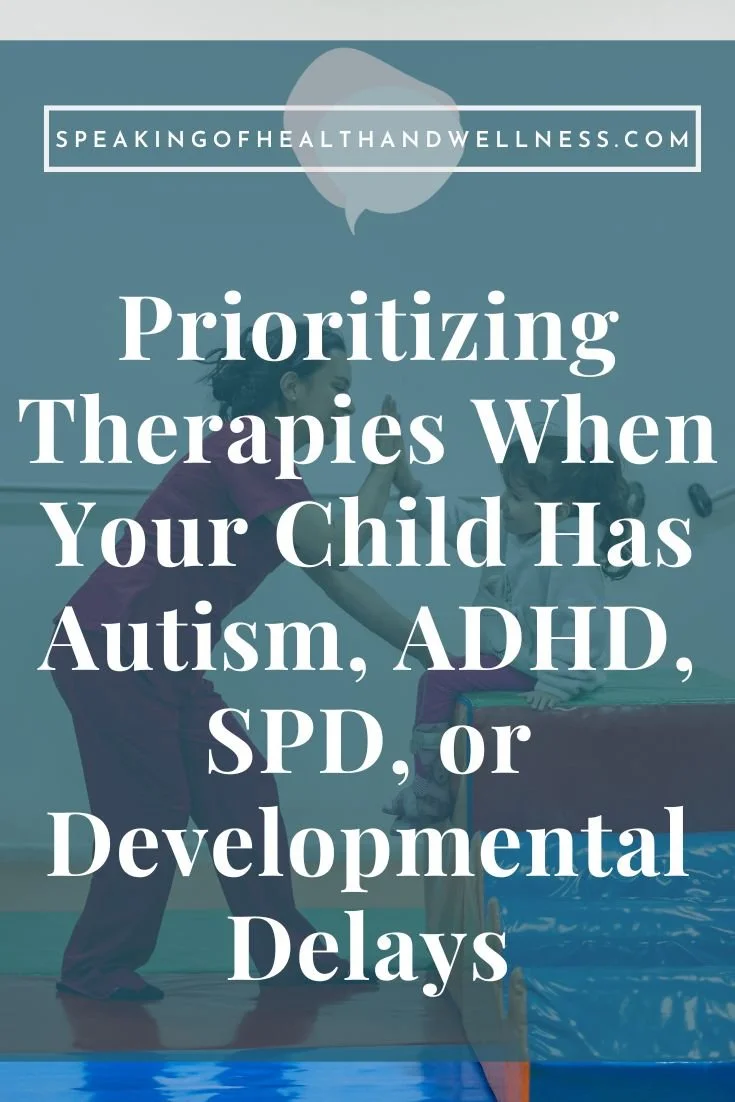When a child has a neurodevelopmental condition or is showing signs of developmental delays it’s not uncommon to feel overwhelmed by the number of therapies recommended. Speech therapy, occupational therapy, feeding therapy, ABA, play-based models, social groups, physical therapy... and that’s just the beginning.
So how do you know what to do first? What matters most? And how do you know if it’s actually helping?
These are questions I hear all the time from families. The reality is, more therapy isn’t always better and without the right foundations in place, even the most well-intentioned therapies and interventions can fall short.
In a recent article I wrote for Documenting Hope, I shared a framework to help parents rethink how they prioritize therapies and supports. Below is a quick summary of what I cover more in depth in the full article.
Start with Regulation
If a child is chronically dysregulated… shut down, anxious, explosive, or emotionally flooded, they may not be in a state to benefit from direct therapy yet. It’s not about willingness or effort. It’s about nervous system capacity.
In many cases, therapeutic strategies won’t “stick” and generalize unless the child is first supported at the level of regulation. Sometimes, that means scaling back. Other times, it means shifting what kind of support comes first or next.
While there are many therapies, interventions, and supports available to help with nervous system regulation, the key is finding what’s best suited to your child’s individual needs. One powerful and often overlooked support you can implement at home is co-regulation. Your own nervous system plays a vital role in helping your child feel safe and settled. A dysregulated child often finds the most comfort in the steady presence of a regulated adult, who can offer calm, connection, and consistency. Starting with your own regulation is not only supportive for you, it’s foundational for your child’s ability to regulate and thrive.
Consider the Body
Therapy is often seen as the first step when a child is struggling, but many symptoms like meltdowns, attention challenges, speech-language issues, or complex picky eating can be linked to what’s happening inside the body. Things like gut issues, poor sleep, inflammation, nutrient deficiencies, food sensitivities, and more can all play a role.
When we support those underlying systems, children often become calmer, more engaged, and more capable of making meaningful progress even before adding more therapies. It doesn’t mean therapy isn’t needed, but it gives the brain and body a better foundation for growth and therapy generalization.
This is why holistic nutrition and a low-toxicant lifestyle play such a powerful role in supporting development. When we address things like their “total load”, blood sugar balance, sleep rhythms, digestion, and nutrient density, we aren’t just helping the body… we’re helping the nervous system regulate more effectively.
When a child feels more regulated, they’re better able to learn, connect, and grow.
Target Gaps Intentionally
Once a child is more regulated and physically supported, therapies and interventions can become much more effective, but more hours doesn’t always mean more progress.
Sometimes, focusing on one high-impact area at a time brings more progress than juggling five different appointments a week. In some cases, a pause or pivot in services is what allows the child’s system to catch up and integrate. Sometimes parents share that they’ve noticed great progress in their children while on vacation. Have you ever noticed that?
If your family is feeling maxed out on therapies and interventions, but not seeing the results you hoped for, this blog might help you reflect and perhaps reframe your current plan. In the full article, I go deeper into how to evaluate your child’s readiness, what signs to look for, and how to bring a whole-child lens to the therapy conversation.
[Click here] to read the full article on Documenting Hope
Want more support as you navigate developmental or feeding challenges?
If you’re looking for practical and respectful strategies to support your child’s feeding, development, and regulation at home, I invite you to download my free guide:
The Dos and Don’ts for Parents of Complex Picky Eaters
This guide will help you approach mealtimes more confidently and compassionately, especially if your child has underlying developmental or sensory challenges.
I hope you’ve found encouragement in this article and/or the full article on Documenting Hope. I’m wishing your child and family all the very best as you navigate the next steps ahead.
With care,
Shandy Laskey, M.A., CCC-SLP, FNTP
Founder + CEO, Speaking of Health & Wellness, LLC



